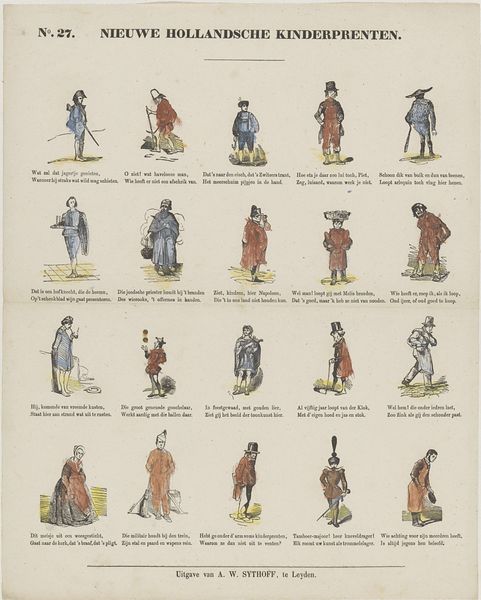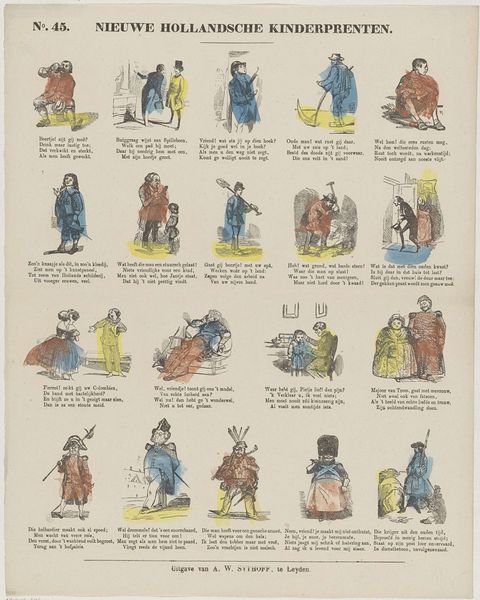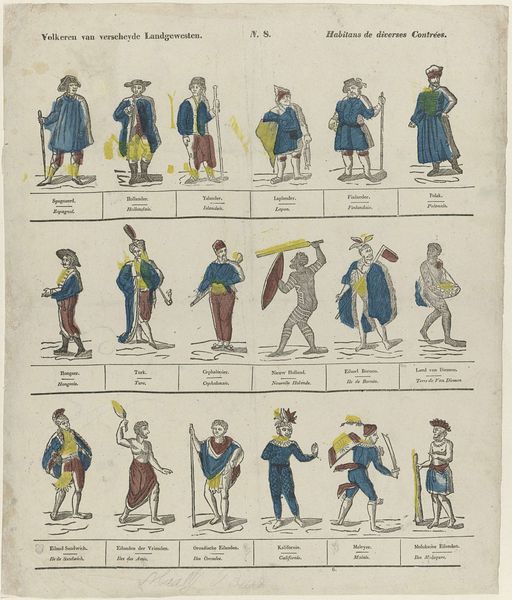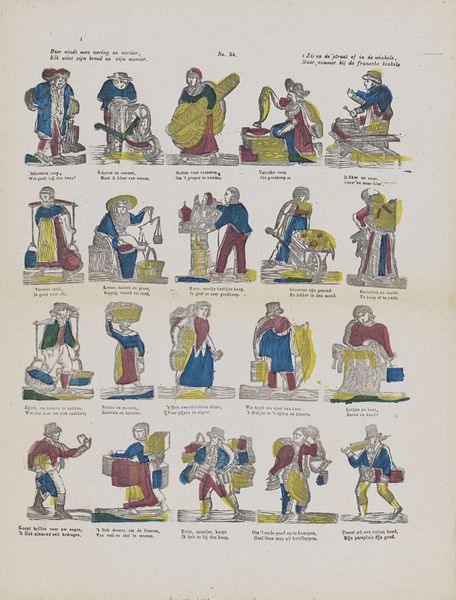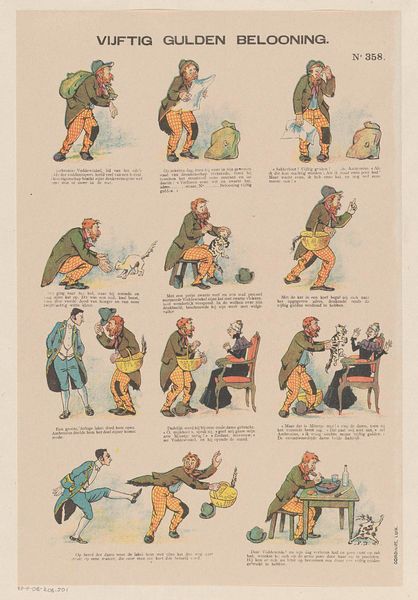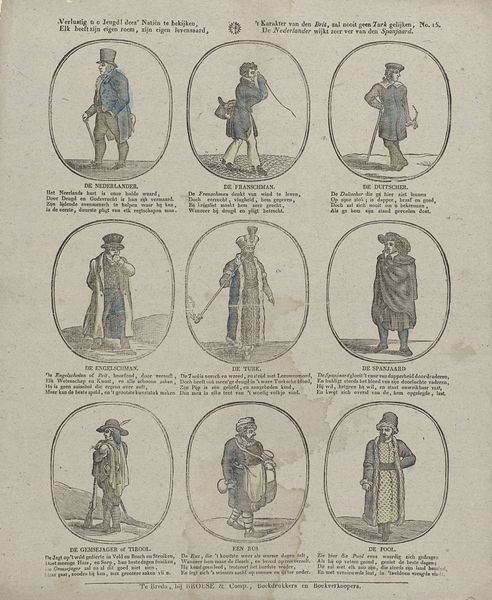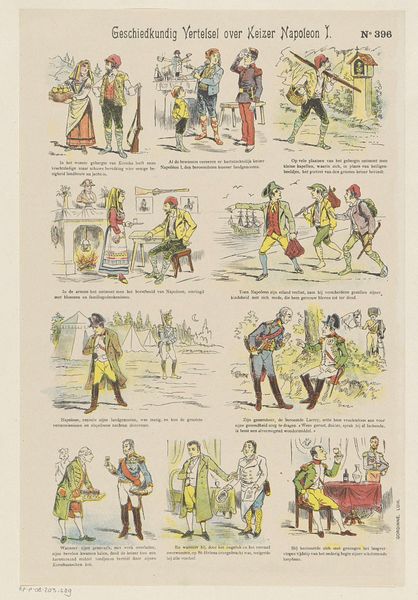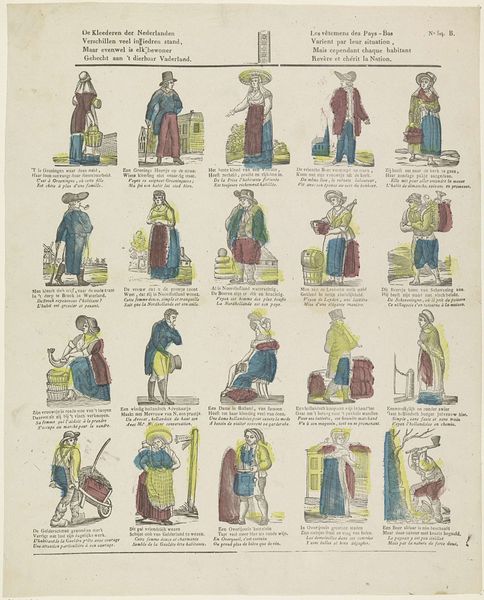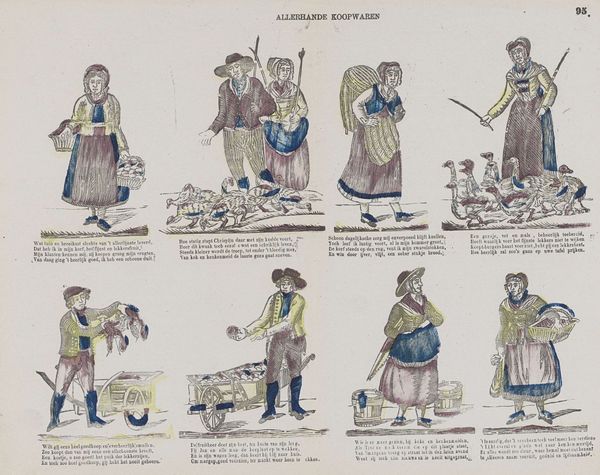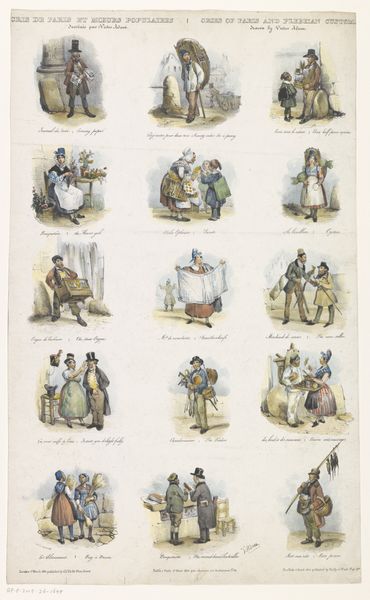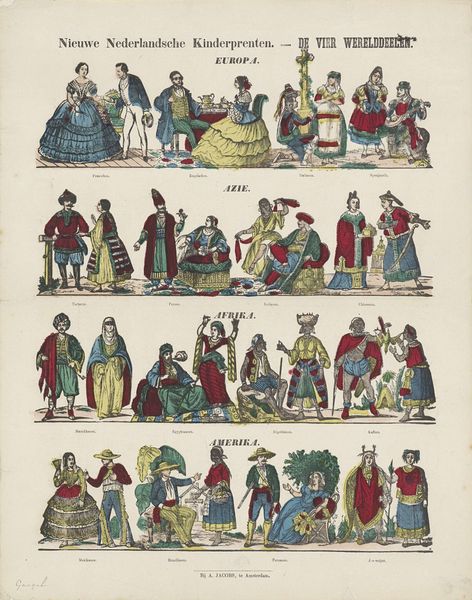![Zoo was, in vroeger eeuw de dragt [(...)] by Albertus Willem Sijthoff](/_next/image?url=https%3A%2F%2Fd2w8kbdekdi1gv.cloudfront.net%2FeyJidWNrZXQiOiAiYXJ0ZXJhLWltYWdlcy1idWNrZXQiLCAia2V5IjogImFydHdvcmtzLzVlZmRjY2Y2LTgwMDUtNGQzYy05OTAxLWM2Y2I4MDkxMmI4Yy81ZWZkY2NmNi04MDA1LTRkM2MtOTkwMS1jNmNiODA5MTJiOGNfZnVsbC5qcGciLCAiZWRpdHMiOiB7InJlc2l6ZSI6IHsid2lkdGgiOiAxOTIwLCAiaGVpZ2h0IjogMTkyMCwgImZpdCI6ICJpbnNpZGUifX19&w=3840&q=75)
drawing, lithograph, print, paper
#
drawing
#
dutch-golden-age
#
lithograph
# print
#
paper
#
watercolour illustration
#
genre-painting
Dimensions: height 394 mm, width 312 mm
Copyright: Rijks Museum: Open Domain
Editor: Here we have "Zoo was, in vroeger eeuw de dragt," created between 1861 and 1929, currently housed in the Rijksmuseum. It's a lithograph print on paper. What immediately strikes me is its illustrative, almost pedagogical quality, and the somewhat muted color palette. What's your perspective on this piece? Curator: The interest lies primarily in the formal arrangement. Notice how Sijthoff organized the figures within a grid. Each figure's pose, their costuming, presents a visual study of form. The minimal colour palette, limited to washes of red, yellow, and blue, serves to highlight the underlying structure rather than distract with naturalistic details. Do you notice the relationship between the figures and the text beneath them? Editor: Yes, they seem directly related. The figures illustrate different historical or cultural attire, labelled with short descriptive texts below. The poses are all quite static and frontal. Curator: Precisely. It becomes a kind of visual catalogue, almost taxonomic in its presentation. We can analyse the recurring geometric shapes used to depict the bodies - the cylindrical legs, the rectangular torsos. The interest is not in individual character, but in the universal forms that define human representation. Editor: So you’re focusing less on what these figures represent culturally, and more on how they’re constructed as visual elements? Curator: Exactly. Consider the use of line - thin and delicate in places, thicker and more pronounced in others, defining the contours and delineating form. It creates a unique graphic language, one that transcends mere representation. It’s this careful modulation of form and line that interests me most. Editor: That’s fascinating! I initially saw it as a historical document, but you've made me appreciate the underlying formal structures. Thanks for pointing that out.
Comments
No comments
Be the first to comment and join the conversation on the ultimate creative platform.
